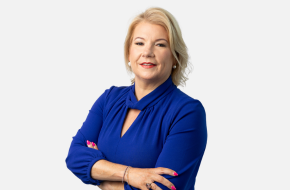Inclusive and diverse workplaces have become an attention-grabbing issue, particularly given the added momentum of increased focus on ESG in recent years. But financial services firms have a particular incentive to take notice.
Studies show that a diverse leadership team can enhance performance and reduce the risk of misconduct penalties for financial firms in particular. According to a study from City University of London, banks with more female directors face lower and less frequent fines for misconduct, saving those institutions about £5.7 million on average. That’s a massive incentive to diversify leadership.
In other words, promoting inclusion and diversity within a firm’s leadership team provides firms with a tangible benefit beyond appeasing investors. But if the boost to profit and loss isn’t sufficient motivation, regulators are increasingly emphasising diversity as a step toward addressing potentially toxic corporate culture.
In this post, we’ll explore how diversity, equity and inclusion (DE&I) benefits firms and how regulators are enforcing diversity benchmarks.
Studies reveal less risk and better performance with more diversity and inclusion
The argument in favor of increasing diversity is not new, nor is it a mere tag-along to the uptick in focus on socially progressive initiatives. In fact, there is an abundance of research demonstrating the quantifiable benefits to firms that facilitate diverse leadership.
As mentioned above, gender diversity has been shown to have a causative link to performance; but other less-researched types of diversity also make a demonstrable difference. A recent study by McKinsey showed that top-quartile companies for racial and ethnic inclusion outperformed their fourth-quartile counterparts by 36% in profitability.However, a 2020 benchmarking report by the European Banking Authority (EBA) found that firms have not internalised these benefits with action. Over 40% of institutions still had not adopted a diversity policy, and two-thirds of boards were exclusively male and predominantly white. At the time of writing, financial services ranks as one of Europe’s worst industries for gender pay gaps—an imbalance that regulators are working to correct.
Regulators are taking action to ensure diverse, inclusive leadership
Disclosure of corporate DE&I policies is largely voluntary for now, but that is changing. Regulators across jurisdictions are taking action to keep firms accountable to the goal of increased diversity.
Europe
Mandatory pay gap reporting is already required in some jurisdictions, highlighting where such gaps exist and prompting firms to address them in the face of investor scrutiny. The European Commission’s Gender Equality Strategy includes both pay transparency measures and gender balance targets on company boards by June 2026.
Some member states have already taken steps to promote diversity. The Central Bank of Ireland published its first gender pay gap analysis in 2018, paving the way for other banks and financial institutions to follow suit. Their governing board has three women out of ten total members and a fairly diverse management mix, with 49% female leadership among division heads.
United Kingdom
In the UK, the Financial Conduct Authority (FCA) has issued rules requiring listed companies to disclose details of their board diversity. Diversity disclosures will be measured against a few stated targets: minimum 40% female board membership, at least one board member from a minority ethnic background, and at least one woman in a senior board position. While there is no requirement to meet these targets, firms must be prepared to explain why if they cannot meet them.
United States
In 2021, the US Securities and Exchange Commission (SEC) approved exchange listing rules requiring Nasdaq-listed companies to have at least two diverse directors. Specifically, they must include at least one woman and one member of an underrepresented group or explain why they failed to meet that requirement. Public companies must disclose whether diversity is considered when selecting board nominees.
The SEC has also indicated that board diversity will be an increasing focus in the near future, so U.S.-based firms should stay alert for new federal regulation. State-level governments have already taken matters into their own hands, imposing board diversity requirements for corporate boards across industries.
What is driving the increase in focus on DE&I?
According to a 2020 report from Deloitte, the relatively recent increase in focus on DE&I initiatives can be attributed to a wide range of causes, including the global political environment, a globalised workforce, shifting values, increased life span, rapid pace of change, the flattening of traditional hierarchies, and demographic shifts.
As many have been careful to point out, diversity without inclusion is not enough. Diversity refers to the presence of individuals with a wide range of backgrounds and characteristics; inclusion is the practice of making them all feel that they have an equal opportunity to contribute and grow within the organisation.
Diversity cannot succeed without a correlative focus on inclusion, meaning that firms must do more than promote diverse hiring to appease regulators—but adjusting hiring practices is a place to start.
The march of progress is slow, but steady
Diversity at senior levels in the regulated financial services sector is on the right track but still insufficient, per the latest Central Bank of Ireland Demographic Analysis Report.
The report analysed ten years of applications to Pre-Approval Control Function (PCF) roles at the Central Bank and found that, while diverse representation is up, it’s still well below ideal benchmarks. Only one in three applicants were female in 2021—up from fewer than two in ten a decade ago, but still well below half.
While gender diversity is only one form of the issue at large, it is an indicator of wider diversity trends. Increasing top-down diversity of all kinds is a critical first step toward improved representation and performance. Not only is promoting diversity an ethical imperative; it can deliver financial benefits to companies that prioritise it. Firms that ignore these benefits, whether intentionally or unintentionally, do so at their peril.






